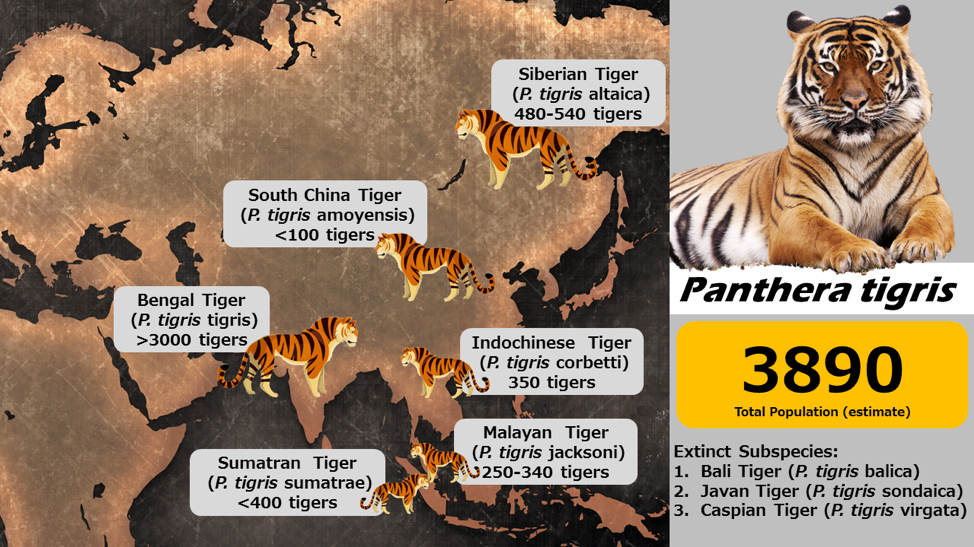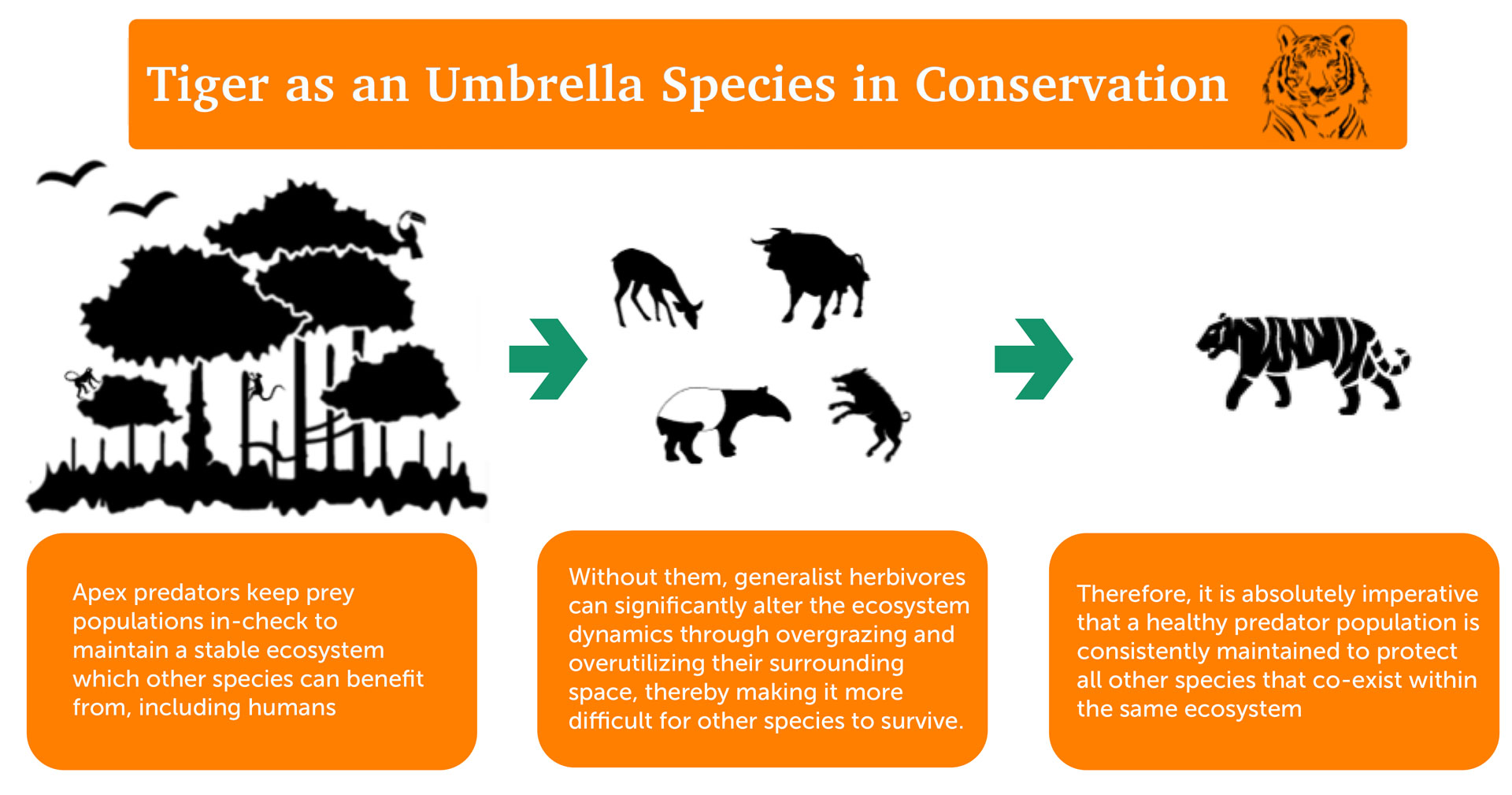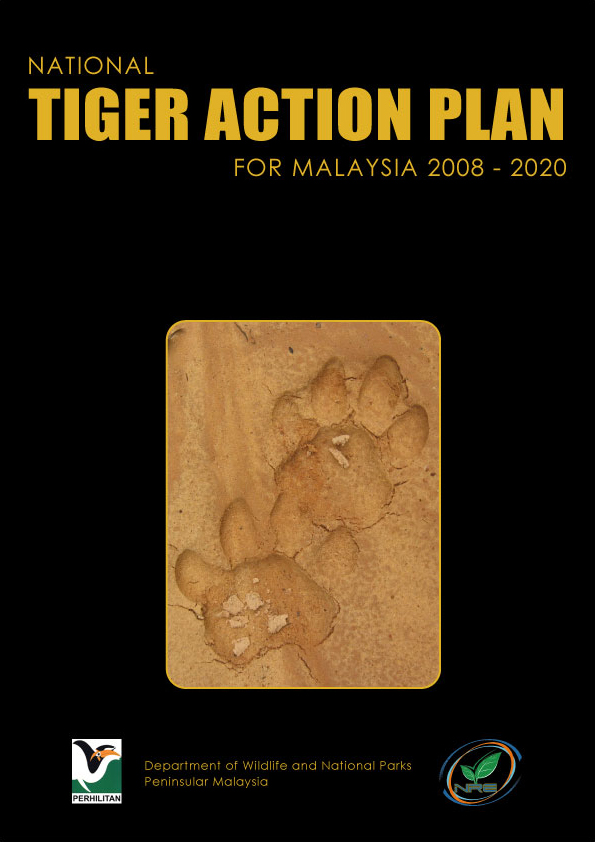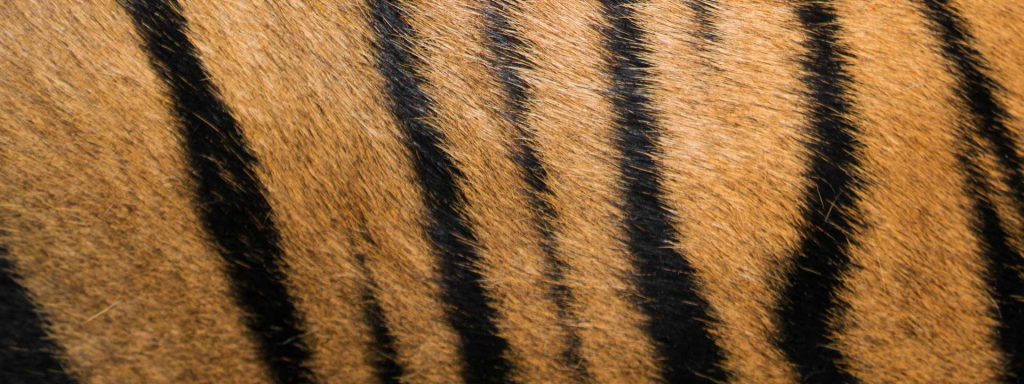
MPOC And PERHILITAN Joining Hands To Save The Malayan Tiger
Prowling through the lush jungles of Peninsular Malaysia is one of its country’s most iconic animals – the Malayan tiger. Taxonomically known as Panthera tigris Jacksoni, the Malayan tiger is an apex predator that roams extensively over the forested areas of Peninsular Malaysia and Southern Thailand. The classification of these tiger subspecies remains divided among the scientific community, but a more recent DNA molecular analysis strongly supports the results of several earlier publications in the six living, three extinct subspecies recognition3.
Taking a quick glimpse of Malaysia’s coat of arms could reveal the symbolic significance that this majestic beast holds, which features a pair of fearless Malayan tigers supporting the nation’s emblem1. Even more apparent is the extensive use of tiger stripe pattern on sportswear worn by Malaysian athletes who compete in international sports. It is therefore not difficult for someone who was previously unfamiliar with Malaysia to immediately recognize the Malayan tiger as the nation’s mascot.
In terms of ecological significance, the Malayan tiger is a large carnivore that preys primarily on local ungulates (hoofed mammals) including the Sambar deer (Rusa unicolor), Gaur (Bos gaurus), bearded pig (Sus barbatus), Malayan tapir (Tapirus indicus), barking deer (Muntiacus muntjak) and wild boar (Sus scrofa)2. A healthy predator population keeps many of the browsing and grazing herbivores in-check, which could otherwise bring forth disastrous consequences on native vegetation and forest structures. We humans rely on the abundance of clean freshwater, air, natural resources and shelters that only a healthy ecosystem could provide. Without the presence of a vital keystone species such as the tiger to maintain the balance in our ecosystem, all of these would cease to exist.
A formidable big cat capable of taking down even the largest land mammal in Malaysia, the Malayan tiger is not without enemies. Anthropogenic factors such as illegal poaching and habitat destruction are two of the major culprits that have led to the severe plummet of worldwide tiger population within the last 120 years. The total number of tigers in recent years is estimated to be at around 32-39% from what it was before back in the 1900s, when the world’s tiger population was still at a sizable 100,000 individuals4,5. Of the 3200-3900 wild individuals estimated today, only 250-350 are Malayan tigers6. With only so few of them left in the wild, the IUCN Red List had revised the conservation status of the Malayan tiger from “Endangered” into “Critically Endangered” in June 2015, highlighting the severity of the issue.

In Malaysia, the increased number of tiger roadkills and human-tiger conflicts can be attributed to habitat fragmentation caused by urban development and agricultural expansion that have ventured deep into tiger territory. Aside from that, a steady decline in prey options and number has also led to tigers preying on livestock, further escalating the tension between humans and tigers7. Without conservation intervention, there is a very good chance that this distinct subspecies will follow the footstep of its extinct cousins, namely the Bali, the Javan and the Caspian tigers.
In 2006, the Department of Wildlife and National Parks Peninsular Malaysia (PERHILITAN) drafted the National Tiger Conservation Action Plan (NTCAP), which aims to increase the wild Malayan tiger population to at least 1000 individuals. During the program’s initiation in 2008, the wild Malayan tiger population was estimated to be at 500 individuals8. While conservation efforts have been taken independently and cooperatively by several organizations throughout the years, the number of wild Malayan tigers population has decline. Despite so, conservationists are far from giving up from protecting the Malayan tiger.
Just last year, PERHILITAN and the Malaysian Palm Oil Council (MPOC) undertook an unprecedented initiative to rescue, rehabilitate and reintroduce Malayan tigers into the wild. Within the scope of this initiative, the idea has been mooted that rescued adult “trouble-makers” (tigers that came too close to settlements which pose a threat not only to themselves but also to humans and livestock) will be kept as breeding pairs to produce offspring that could eventually be released back into the wild.
This is the first time in Malaysia’s conservation history that a captive breeding program for tigers will be attempted. Inspired by Russia and India’s successful tiger reintroduction cases back in 2015, such reintroduction program not only presents a glimpse of hope for this exotic feline’s dwindling population in the wild but also provides great opportunities for researchers and conservationists alike to collect data that will aid in future conservation work.
Two such facilities have been established to carry out the tiger conservation program – a rescuing-and-breeding facility at the National Wildlife Rescue Centre (NWRC) in Sungkai Wildlife Reserve, and a cub rewilding facility at the National Tiger Conservation Centre (NTCC) in Krau Wildlife Reserve.
Rescued adults are housed at the NWRC in Perak, where they receive extensive care from a team of veterinarians, wildlife managers, and conservation staff. After an observational period and a series of medical examinations, fertile tigers will be paired for breeding purposes.


Regular health monitoring conducted by veterinarian in NWRC
Despite being one of the smallest tiger subspecies, an average adult male Malayan tiger still weighs 100-140kg whereas a female weighs around 75-111kg9. Running a wildlife rescue center is financially burdensome, especially when it is housed with big cats that need to consume 5-7kg of meat (sometimes more depending on nutritional needs) per individual per day9,10. With 18 of them at the NWRC, the food and medical bill can reach a hefty RM500,000 annually. Wild tigers get to consume various parts of their preys, including internal organs which contain many crucial vitamins, minerals and trace elements.
To prevent health complications from living off a captive diet, tigers in the NWRC are instead supplemented with premium red palm oil that contains a high concentration of pro-vitamin A carotenoids and vitamin E tocotrienols. Sometimes, rescued tigers brought in to the NWRC are diagnosed with serious underlying medical conditions. When a young male called Lobo was brought in, veterinarians diagnosed it as a late-stage cataract sufferer and needed to be operated immediately to restore its vision. The cost for Lobo’s surgery was sponsored by MPOC.
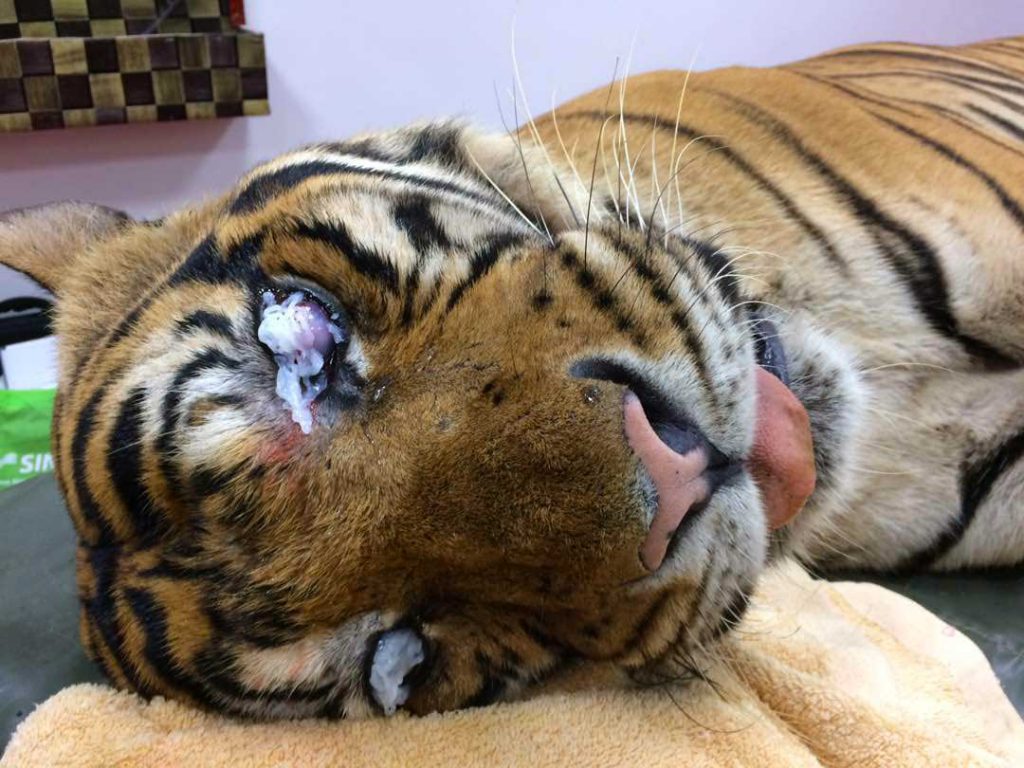
Lobo: Post- operation to remove cataract
Once tiger cubs are born in captivity at the NWRC, they will stay there with their mom for about 2 years before being relocated to the NTCC in Pahang to undergo rewilding. This process is essential as sub-adults will get the opportunity to develop survival skills prior to their release into the wild. Throughout the rewilding process, human interaction will be kept minimum and feeding is done by introducing live preys such as goats and wild boars to elicit hunting instincts. Once these pre-adults have been reconditioned to live on their own, they will be transferred to the release sites where they will spend the rest of their life roaming freely. Costs in the NTCC can be quite substantial since it covers food and medical bills. These also include the transportation cost for relocation of pre-adults from the NWRC to the NTCC and then to the release sites, and other cost to construct furniture for enrichment, planting trees similar to tigers’ natural habitat within the rewilding center are just some of the many added financial challenges.
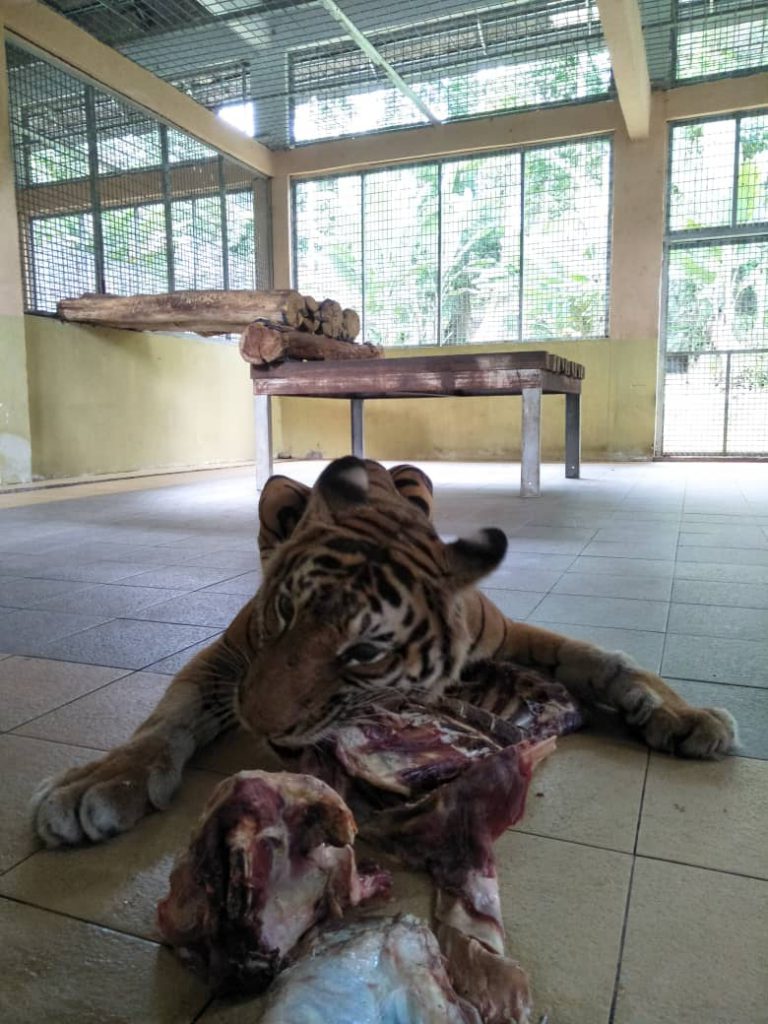

Pre-adults will be translocated to NTCC for re-wilding programme prior to re-introduction
Despite PERHILITAN’s best effort to run the tiger conservation program and MPOC’s unwavering patronage to fund it, there are still many areas that could use help. For instance, to offset the low prey count mentioned earlier, Sambar deer have been bred in captivity at the Wildlife Conservation Center in Sungkai as well as in Gua Musang. Prior to releasing any pre-adults tigers from the NTCC, groups of Sambar deer would first be introduced to the release sites. The facilities to breed these deer require more financial support for food, medication, facility enhancement and habitat enrichment. Aside from that, increasing the funding for researchers, veterinarians, wildlife staff and rangers also means that more individuals can contribute towards this project.
Other than financial support, the Malaysian society can all help to contribute towards the conservation of our tigers through various means. For example, individuals like you and I can help to spread conservation awareness and promoting environmental education and outreach programs in schools, workplaces, family gatherings and other social events. Participation in conservation programs and volunteer work that indirectly benefit wildlife, such as forest cleanup is also invaluable to organizations that rely heavily on human power to run them. Curriculum creators can incorporate key conservation topics into existing curriculum framework to cultivate environmental stewardship among students. Policy makers can enforce stricter wildlife laws to reduce illegal poaching as well. Being a consulting body that promotes the usage of sustainable palm oil practices to drive Malaysia’s economy forward, the MPOC urge all Malaysian citizens, especially those involved in the palm oil industry to support wildlife conservation programs in Malaysia.
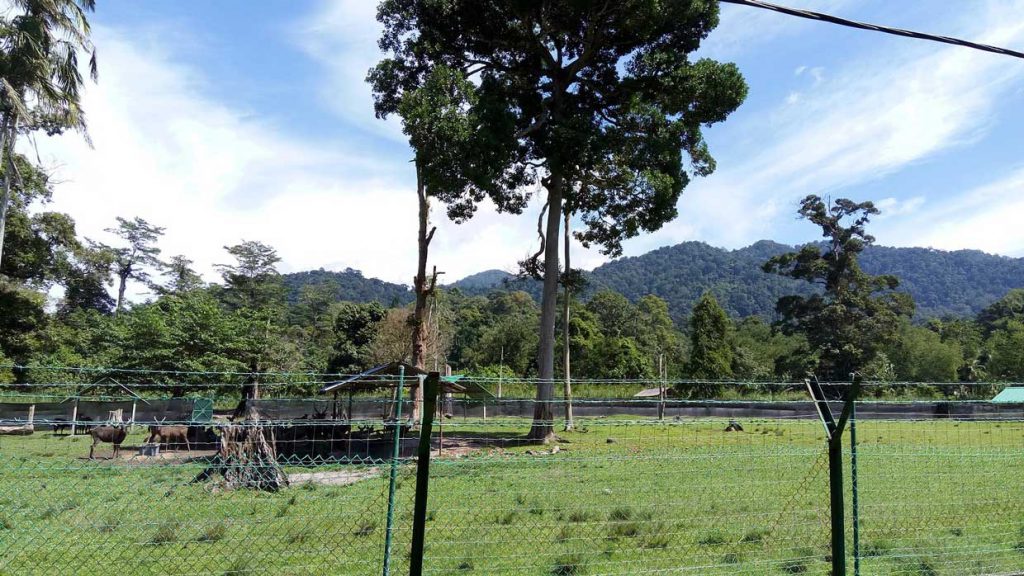
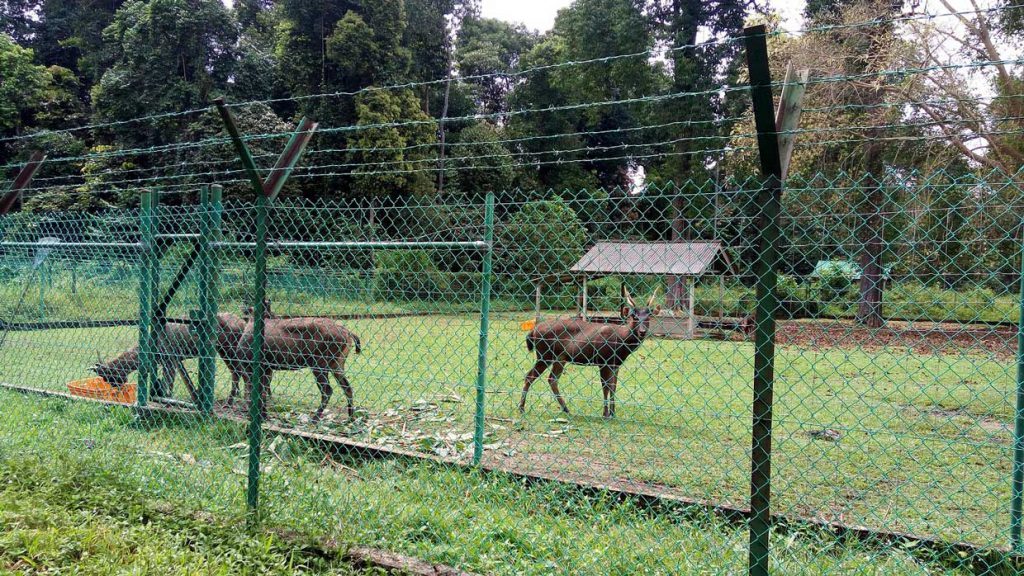
Breeding facility of Sambar Deer
Let us pray that this national pride that brought us fame in international settings will continue to propagate and flourish. May the roar of the Malayan tiger be heard in every corner of the world, and may it never end. MPOC, through its recently established “Malaysian Palm Oil Green Conservation Foundation (MPOGCF)” is committed to support those objectives.

References (APA):
[1] Malaysia.gov.my. 2016. Mygov – The Government Of Malaysia’s Official Portal. [online] Available at: <https://www.malaysia.gov.my/portal/content/137> [Accessed 20 July 2020].
[2] Kawanishi, K., Clements, G., Gumal, M., Goldthorpe, G., Yasak, M. and Sharma, D., 2013. Using BAD for good: how best available data facilitated a precautionary policy change to improve protection of the prey of the tiger Panthera tigris in Malaysia. Oryx, [online] 47(3), pp.420-426. Available at: <https://www.researchgate.net/publication/259434879_Using_BAD_for_good_How_best_available_data_facilitated_a_precautionary_policy_change_to_improve_protection_of_the_prey_of_the_tiger_Panthera_tigris_in_Malaysia> [Accessed 20 July 2020].
[3] Liu, Y., Sun, X., Driscoll, C., Miquelle, D., Xu, X., Martelli, P., Uphyrkina, O., Smith, J., O’Brien, S. and Luo, S., 2018. Genome-Wide Evolutionary Analysis of Natural History and Adaptation in the World’s Tigers. Current Biology, [online] 28(23), pp.3840-3849.e6. Available at: <https://www.cell.com/current-biology/fulltext/S0960-9822(18)31214-4?_returnURL=https%3A%2F%2Flinkinghub.elsevier.com%2Fretrieve%2Fpii%2FS0960982218312144%3Fshowall%3Dtrue> [Accessed 20 July 2020].
[4] World Wildlife Fund. 2020. Tiger | Species | WWF. [online] Available at: <https://www.worldwildlife.org/species/tiger#:~:text=Based%20on%20the%20best%20available,its%20future%20in%20the%20wild.> [Accessed 20 July 2020].
[5] Joshi, A., Dinerstein, E., Wikramanayake, E., Anderson, M., Olson, D., Jones, B., Seidensticker, J., Lumpkin, S., Hansen, M., Sizer, N., Davis, C., Palminteri, S. and Hahn, N., 2016. Tracking changes and preventing loss in critical tiger habitat. Science Advances, [online] 2(4), p.e1501675. Available at: <https://advances.sciencemag.org/content/2/4/e1501675> [Accessed 20 July 2020].
[6] Kawanishi, K. 2015. Panthera tigris ssp. jacksoni. The IUCN Red List of Threatened Species 2015. e.T136893A50665029. http://dx.doi.org/10.2305/ IUCN.UK.2015-2.RLTS.T136893A5 0665029.en.
[7] Unpublished data from the Department of Wildlife and National Parks Peninsular Malaysia (PERHILITAN)
[8] Department of Wildlife and National Parks Peninsular Malaysia. 2008. National Tiger Action Plan For Malaysia 2008-2020. [ebook] Kajang, Selangor: Arisystems Sdn. Bhd. Available at: <http://www.catsg.org/fileadmin/filesharing/3.Conservation_Center/3.4._Strategies___Action_Plans/Tiger/DWNP_2008_National_Tiger_Action_Plan_Malaysia_2008-2020.pdf> [Accessed 20 July 2020].
[9] Tulsazoo.org. 2020. [online] Available at: <https://tulsazoo.org/wp-content/uploads/2015/08/MALAYAN-TIGER.pdf> [Accessed 20 July 2020].
[10] San Diego Zoo Global: Library. 2020. Tiger (Panthera Tigris) Fact Sheet: Diet & Feeding. [online] Available at: <https://ielc.libguides.com/sdzg/factsheets/tiger/diet> [Accessed 20 July 2020].

